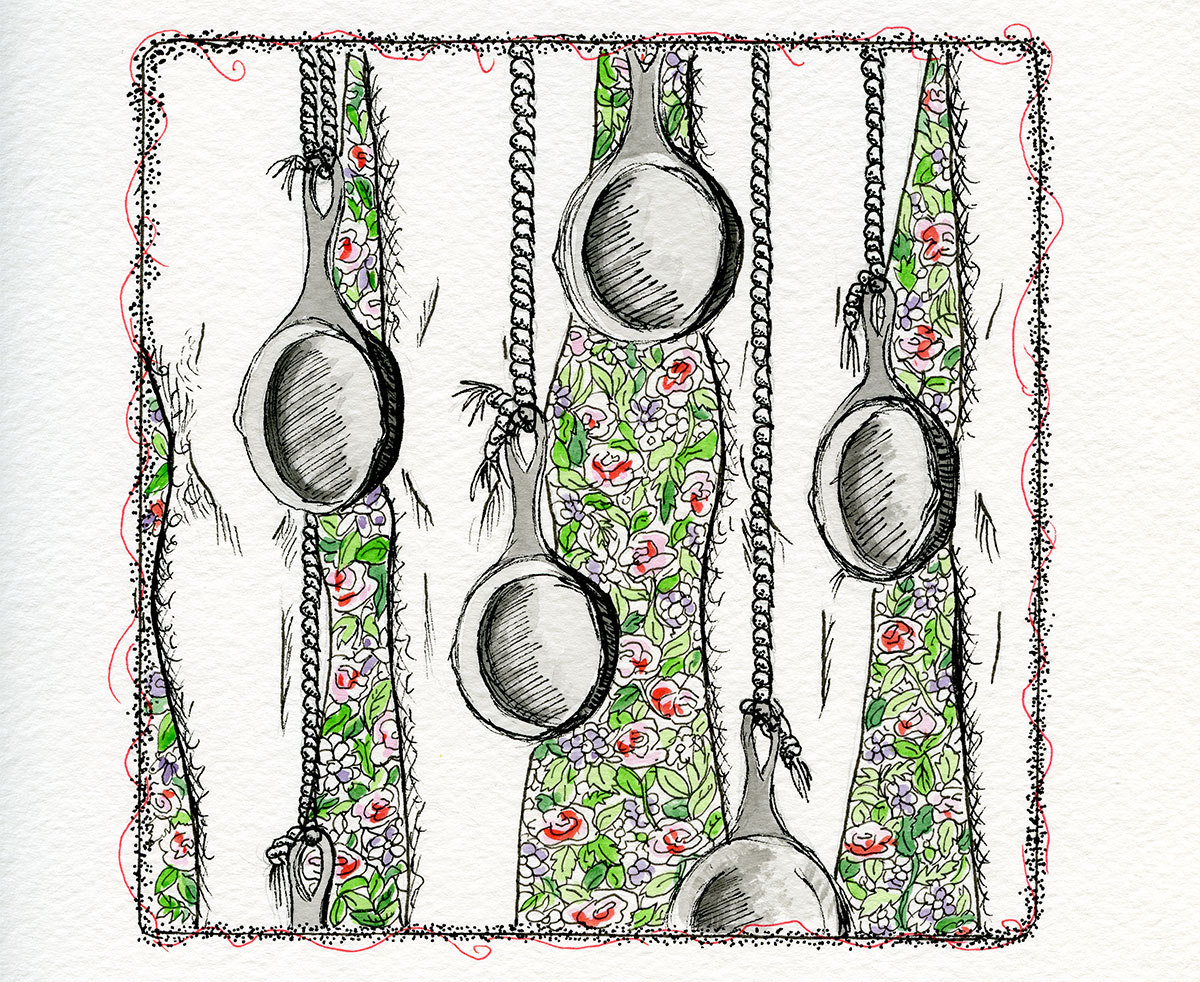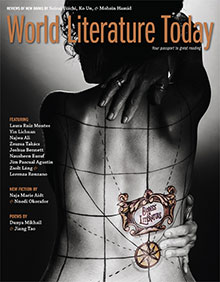Roasted Lover Thighs: A Recipe from the Zsolt Láng Cookbook

In this page from his cookbook, one of most original writers in the Hungarian language imagines an unexpected solution for the unfaithful husband.
Rózsika Baly’s cookbook instructs us that, if we should find a string of red hair in our husband’s underwear and our hair happens to be pitch-black, it is time to take out the frying pan, for sooner rather than later we’ll have something to put in it. We shouldn’t forget to check, however, if our quarry is young enough, for a discarded lover is tough like the roast beef of Old England, and just as hard to digest. And as Rózsika Baly says, man lives not by what he eats but by what he digests.
Roasted lover thighs had once been a rare and recherché dish, served to queens and ladies-in-waiting, but by now they’ve made their entry into fairly any household. According to Don Burija de Biruta, the famed feminist conquistador, it is hard to imagine a people that lives on bread and vegetable stew alone, and even if such a people existed somewhere, they would be conquered in no time by the kitchen knives of carnivorous peoples.
Take thus a handsome, plump lover thigh of about six to seven pounds, rinse and skin carefully. Young lover’s skin is easy to pull off. If you feel like killing the utiledulci and the rough-and-tumble with one stone, dress the thigh generously with husband tail sliced into thin rings. Place in frying pan over high heat, sprinkle with a few sprigs of your bridal bouquet, add your wedding rings—one of them may include the finger in the bargain. Baste with two cupfuls of yellow gall sauce, then pepper lavishly with bitter hightail weed.
Some consider it is barbarous to roast lover thigh in any other way than at high temperature and in a covered pan, for its savor is extremely volatile. If you want to have it crispy, though, cook without putting on the lid and serve accompanied with self-picked condyloma.
Wrap end in aluminium foil, so it can be consumed civilly.
Translation from the Hungarian
By Erika Mihálycsa
Editorial Note: Visit the WLT blog to read another of Zsolt Láng's recipes titled “Green Memory Stewed in Sugar.” You can also read another recipe from the Zsolt Láng cookbook—“Summer Husband Gâteau with Caramel-Cream Filling”—in the print or digital edition of the magazine.






